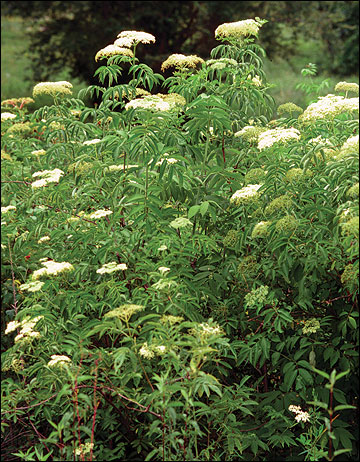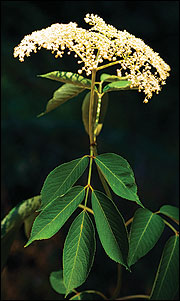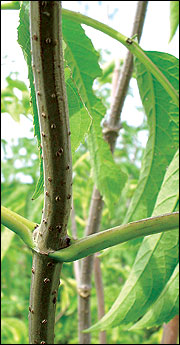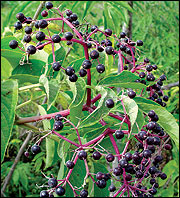Elderberry, common
- Sambucus canadensis
Woody
The dense foliage of elderberry thickets makes excellent summer thermal and escape cover.
©James H. Miller, USDA-NRCS Plants Database
Description
Common elderberry is a shrub that grows to 8 feet tall and forms dense colonies from root sprouts. The tops are multibranched, bearing opposite, pinnately compound leaves 4 to 12 inches long. Lance-shaped leaflets are 2 to 6 inches long, 1 to 2 inches wide and sharply toothed. The light yellow-brown to gray-brown twigs are covered with many lenticels. Large clusters of white flowers bloom from late May to July and are conspicuous even from a distance. Purple to black fruits occur in clusters on flat-topped heads from August to October. Common elderberry occurs throughout the Midwest in open woods, thickets, stream banks, fencerows, roadsides and railroad rights-of-way. Fire and disking should be used sparingly around this shrub.
Bloom period
May to July
Use by bobwhites
Common elderberry has considerable value for wildlife for food and cover. More than 45 species of birds, including quail, eat the seeds. The branching crown provides excellent summer thermal and escape cover.






